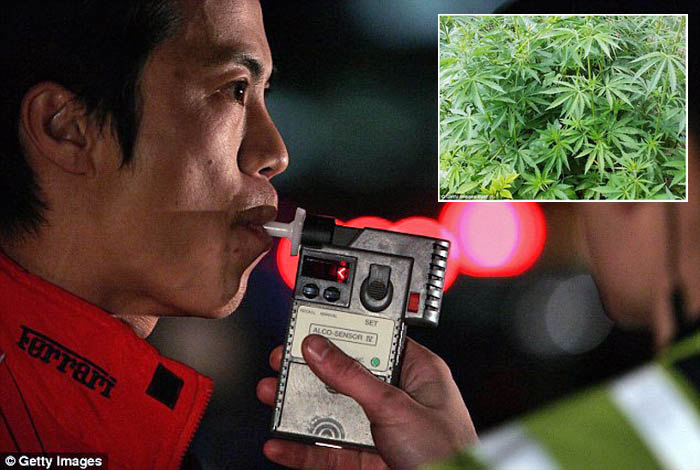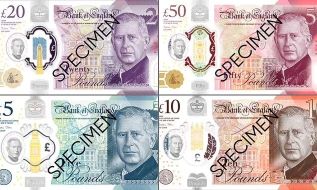Tes Urine Cara Usang, Potalyzer Lebih Efektif Uji Narkoba
Researchers Reveal Three Minute Nanotech Saliva Test for Marijuana
Editor : Ismail Gani
Translator : Novita Cahyadi

PERANGKAT ini dapat membantu ribuan pengemudi kendaraan dari pengaruh minuman keras.
Para peneliti telah mengungkapkan 'potalyzer' pertama - perangkat untuk melakukan uji klinis terhadap peminum alkohol.
Tim dari Universitas Stanford menyatakan perangkat tersebut dapat mendukung kepolisian untuk melakukan pengujian.
Perangkat ini bekerja memanfaatkan nanoteknologi magnetik, yang sebelumnya digunakan sebagai pemindai kanker, terobosan penting untuk menjadi perangkat praktis pertama untuk melakukan tes penggunaan narkoba.
Dipimpin oleh Shan Wang, seorang profesor teknik material dan teknik listrik, tim Stanford menciptakan perangkat praktis yang menggunakan biosensor magnetik untuk mendeteksi molekul THC di air liur.
Petugas yang berwenang dapat mengumpulkan sampel ludah dengan kapas dan melihat hasilnya hasil pada smartphone atau laptop dalam waktu tiga menit.
Perangkat kreasi Stanford, meskipun, dapat berfungsi sebagai 'potalyzer' praktis karena dapat dengan cepat mendeteksi tidak hanya kehadiran THC dalam air liur seseorang, tetapi juga mengetahui konsentrasinya.
Sementara polisi mencoba perangkat potensial ini, saat ini tidak ada perangkat yang terbukti cepat memberikan pengukuran yang tepat dari pengemudi yang dicurigai menggunakan narkoba seefektif perangkat pendeteksi ini.
Beberapa negara menetapkan batas THC dalam tubuh untuk pengemudi, sementara yang lain menetapkan batas 0 atau 5 nanogram (sepermilyar gram) per mililiter darah.
Perangkat kreasi Wang dapat mendeteksi konsentrasi THC di kisaran 0 sampai 50 nanogram per mililiter di air liur.
Sementara belum ada konsensus tentang berapa banyak THC dalam tubuh pengemudi, studi sebelumnya telah menyarankan cutoff antara 2 dan 25 ng/mL, yang mampu dilakukan oleh perangkat Wang.
Para peneliti mencapai presisi seperti memanfaatkan perilaku magnet di nanopartikel, yang mengukur hanya beberapa puluh miliar gram per mililiter darah.
'Sebagai hal penting dari pengetahuan kita, ini adalah demonstrasi pertama biosensor GMR yang mampu mendeteksi molekul kecil,' tulis Wang pada kertas ilmiah tentang perangkat tersebut, yang diterbitkan dalam jurnal Analytical Chemistry.
Platform ini memiliki potensi kegunaan memeriksa lebih jauh dari THC.
Sama seperti yang mereka lakukan pada THC, biosensor GMR di perangkat ini dapat mendeteksi molekul kecil, yang berarti juga mampu menguji morfin, heroin, kokain atau obat-obatan lainnya.
Bahkan, dengan 80 sensor dibangun ke dalamnya, biosensor Chip GMR dapat menyaring sampel tunggal untuk zat berbahaya lainnya.
Kebutuhan Pengujian
November ini, beberapa negara akan mengambil keputusan penting apakah akan melegalkan penggunaan ganja, bergabung dengan lebih dari 20 negara yang mengizinkan beberapa bentuk penggunaan ganja.
Hal ini mendorong kebutuhan untuk alat yang efektif bagi polisi untuk menentukan di tempat apakah orang-orang yang mengemudi di bawah pengaruh alkohol dan narkoba, kata para peneliti.
THC, zat psikoaktif yang paling ampuh, umumnya digunakan untuk memeriksa darah di laboratorium atau tes urine - namun hal itu tidak banyak penegak hukum di lapangan.
Ini Cara Kerjanya
Dalam pengujian, air liur dicampur dengan antibodi THC, yang mengikat setiap molekul THC dalam sampel.
Kemudian sampel ditempatkan pada cartridge chip yang sekali pakai, yang berisi magnetoresistive (GMR) sensor dilapis dengan THC, dan dimasukkan ke dalam reader genggam.
Ini menetapkan dalam gerak 'pertentangan' antara THC dilapis pada sensor dan THC dalam air liur untuk mengikat dengan antibodi; lebih banyak THC dalam air liur, antibodi lebih sedikit akan tersedia untuk mengikat ke THC pada permukaan sensor.
Jumlah antibodi mengikat molekul THC pada sensor memberitahu perangkat berapa banyak antibodi THC dalam sampel, dan karena itu berapa banyak molekul THC yang hadir dalam sampel.
Berikutnya, nanopartikel magnetik, khusus dibuat untuk mengikat hanya untuk antibodi, yang diperkenalkan sebagai sampel.
Setiap nanopartikel mengikat ke sepasang THC-antibodi seperti sebuah mercusuar lengket, tetapi hanya molekul pada permukaan sensor akan cukup dekat untuk mengikat pada biosensor GMR reader.
Perangkat kemudian menggunakan Bluetooth untuk menyampaikan hasil deteksi ke layar dari smartphone atau laptop seperti dilansir MailOnline.
IT COULD help spot thousands of drivers under the influence.
Researchers have revealed the first 'potalyzer' - an instant roadside test.
The Stanford team behind the invention say it could help police make immediate decisions.
It works using magnetic nanotechnology, previously used as a cancer screen, to create what could be the first practical roadside test for marijuana intoxication.
Led by Shan Wang, a professor of materials science and engineering and of electrical engineering, the Stanford team created a mobile device that uses magnetic biosensors to detect tiny THC molecules in saliva.
Officers could collect a spit sample with a cotton swab and read the results on a smartphone or laptop in as little as three minutes.
The Stanford device, however, could function as a practical 'potalyzer' because it can quickly detect not just the presence of THC in a person's saliva, but also measure its concentration.
While police are trying out potential tools, no device currently on the market has been shown to quickly provide a precise measurement of a driver's marijuana intoxication as effectively as a breathalyzer gauges alcohol intoxication.
Some states have no set limit of THC in the body for drivers, while others set a limit of 0 or 5 nanograms (a billionth of a gram) per milliliter of blood.
Wang's device can detect concentrations of THC in the range of 0 to 50 nanograms per milliliter of saliva.
While there's still no consensus on how much THC in a driver's system is too much, previous studies have suggested a cutoff between 2 and 25 ng/mL, well within the capability of Wang's device.
The researchers achieved such precision by harnessing the behavior of magnetism in nanoparticles, which measure just a few tens of billionths of a meter.
'To the best of our knowledge, this is the first demonstration that GMR biosensors are capable of detecting small molecules,' Wang wrote in a paper describing the device, published in Analytical Chemistry.
The platform has potential usefulness beyond THC.
Just as they do with THC, the GMR biosensors in the device could detect any small molecule, meaning that the platform could also test for morphine, heroin, cocaine or other drugs.
In fact, with 80 sensors built into it, the GMR biosensor chip could screen a single sample for multiple substances.
The Need for a Test
This November, several states will vote whether to legalize marijuana use, joining more than 20 states that already allow some form of cannabis use.
This has prompted a need for effective tools for police to determine on the spot whether people are driving under the influence, the researchers say.
THC, the drug's most potent psychoactive agent, is commonly screened for in laboratory blood or urine tests – not very helpful for an officer in the field.
How the Test Work
In the test, saliva is mixed with THC antibodies, which bind to any THC molecules in the sample.
Then the sample is placed on a disposable chip cartridge, which contains magnetoresistive (GMR) sensors pre-coated with THC, and inserted into the handheld reader.
This sets in motion a 'competition' between the THC pre-coated on the sensor and THC in the saliva to bind with the antibodies; the more THC in the saliva, the fewer antibodies will be available to bind to the THC on the sensor surface.
The number of antibodies bound to THC molecules on the sensor tells the device how many antibodies the THC in the sample used up, and therefore how many THC molecules were present in the sample.
Next, magnetic nanoparticles, specially made to bind only to the antibodies, are introduced to the sample.
Each nanoparticle binds onto a THC-antibody pair like a sticky beacon, but only the molecules on the sensor surface will be close enough to trip the GMR biosensors in the reader.
The device then uses Bluetooth to communicate results to the screen of a smartphone or laptop.















